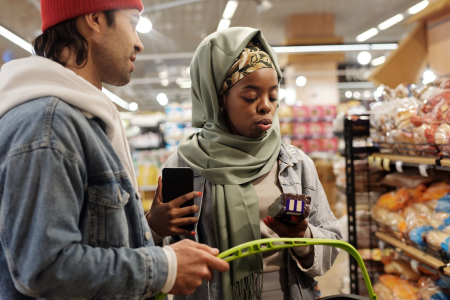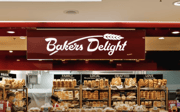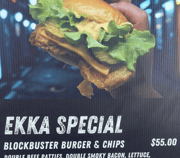Why does Coles ask customers to scan bulky items first? We've got answers
By
Maan
- Replies 0
They never expected their weekly supermarket trips to spark confusion.
Every time they tried to buy a larger item, Coles staff would approach them.
At first, they couldn’t understand why—until the pattern became impossible to ignore.
It usually involved 24 packs of water or 34L cat litter, which they had bought countless times before without issue.
Back when there were more staffed checkouts, employees would simply tell them to leave the items in the trolley while they added them on the conveyor belt without scanning.
The process felt effortless and quick, saving them the heavy lifting.
Things changed as self-checkouts became more common.
They scanned smaller items first while cradling the water pack and noticed a helper approach, panicked.
‘She asked if she could void the transaction so the waters would scan first. I said it’s ok, it’s already scanned and I was ready to pay, but she pleaded with me to let her or she’d get in trouble,’ they recounted.
They were confused but let her proceed, sensing her genuine concern.
On paper, the rule seemed reasonable—heavy items like water could be exhausting to transfer repeatedly between trolley, conveyor belt, car and home.
The new self-checkout process, however, complicated things.
They had to lift the pack out of the trolley to scan it and place it on the weighted area for accurate accounting, which was frustrating.
A self-checkout supervisor eventually suggested using the hand-held scanner to avoid lifting, which felt like a practical solution.
Technology evolved so bulk items no longer needed weighing, which unexpectedly led to a different issue: theft.
Coles staff were just as puzzled as shoppers by these rapidly changing procedures.
One employee explained on social media they were directed to tell customers to ‘scan bulk items first’ to curb loss, sparking frustration among shoppers who felt unfairly suspected of stealing.
‘All the customers hate it and think we are accusing them of trying to steal,’ one worker said in a thread.
‘Literally my most hated thing about work,’ added another.
‘Yep, u get abused by the customer for helping them, and if you don’t, then head office winge cause u did not do it,’ another said.
Other staff saw the policy’s value.
‘Going to go against the grain here, but since it became a thing, the company’s had tens of millions of dollars swing in bulk item loss,’ one worker wrote.
‘Like I’m talking an absolute s*** load of money has stopped walking out the door. Most stores’ top 20 loss lines would be bulk items; now most stores would be lucky to have 1 in there that’s bulk.’
‘If you offer to help the customer with their large items, customer backlash will be minimal. If you tell them you’re following a rule to reduce stock loss, they’ll get angry,’ another explained.
Recently, a trip to Castle Towers Coles showed them a technological solution in action.
Their trolley contained a 24-pack of water and some massive sweet potatoes, yet they weren’t approached by staff.
The self-checkout detected the bulk item and displayed a message: Did you know you can add your large item using the lookup screen?
Coles began rolling out ‘skip scan technology’ in 2024, also called ‘bottom of the trolley’ technology, which identifies bulky items without lifting.
This feature allows customers to add large products while keeping them in the trolley, reducing theft risk and easing the checkout process.
Not all stores have this technology yet, so staff continue to intervene when necessary.
A Coles spokesperson said: ‘At Coles, we’re always looking for ways to improve the shopping experience and deliver exceptional service to the millions of customers who we serve each week.
‘Our team members are encouraged to assist customers wherever possible, particularly when handling bulky or heavy items at the checkout.
‘Scanning these items first helps reduce unnecessary lifting and prevents lighter items from being crushed later in the process.
‘It’s a simple step that makes a big difference in ensuring a smoother, more efficient checkout experience.’
ALDI uses a product code system to ease bulky item purchases, letting staff instruct customers to leave heavy items in trolleys.
Hand-held scanners at ALDI self-checkouts reach multiple barcodes on products, making scanning easier.
Woolworths offers handheld scanners at self-service checkouts and flatbed trolleys for moving heavy items to vehicles.
If you’ve ever been puzzled by why some items need to be scanned first at Coles, you’re not alone.
Other shoppers have shared their own experiences and frustrations with self-checkout policies.
Checking out these real-life examples can help make sense of the system and what to expect next time.
Read more: ‘Can anyone explain why?’: Coles' self-checkout policy confuses shoppers

Have you ever been asked to scan bulky items first and felt unsure why?
Every time they tried to buy a larger item, Coles staff would approach them.
At first, they couldn’t understand why—until the pattern became impossible to ignore.
It usually involved 24 packs of water or 34L cat litter, which they had bought countless times before without issue.
Back when there were more staffed checkouts, employees would simply tell them to leave the items in the trolley while they added them on the conveyor belt without scanning.
The process felt effortless and quick, saving them the heavy lifting.
Things changed as self-checkouts became more common.
They scanned smaller items first while cradling the water pack and noticed a helper approach, panicked.
‘She asked if she could void the transaction so the waters would scan first. I said it’s ok, it’s already scanned and I was ready to pay, but she pleaded with me to let her or she’d get in trouble,’ they recounted.
They were confused but let her proceed, sensing her genuine concern.
On paper, the rule seemed reasonable—heavy items like water could be exhausting to transfer repeatedly between trolley, conveyor belt, car and home.
The new self-checkout process, however, complicated things.
They had to lift the pack out of the trolley to scan it and place it on the weighted area for accurate accounting, which was frustrating.
A self-checkout supervisor eventually suggested using the hand-held scanner to avoid lifting, which felt like a practical solution.
Technology evolved so bulk items no longer needed weighing, which unexpectedly led to a different issue: theft.
Coles staff were just as puzzled as shoppers by these rapidly changing procedures.
One employee explained on social media they were directed to tell customers to ‘scan bulk items first’ to curb loss, sparking frustration among shoppers who felt unfairly suspected of stealing.
‘All the customers hate it and think we are accusing them of trying to steal,’ one worker said in a thread.
‘Literally my most hated thing about work,’ added another.
‘Yep, u get abused by the customer for helping them, and if you don’t, then head office winge cause u did not do it,’ another said.
Other staff saw the policy’s value.
‘Going to go against the grain here, but since it became a thing, the company’s had tens of millions of dollars swing in bulk item loss,’ one worker wrote.
‘Like I’m talking an absolute s*** load of money has stopped walking out the door. Most stores’ top 20 loss lines would be bulk items; now most stores would be lucky to have 1 in there that’s bulk.’
‘If you offer to help the customer with their large items, customer backlash will be minimal. If you tell them you’re following a rule to reduce stock loss, they’ll get angry,’ another explained.
Recently, a trip to Castle Towers Coles showed them a technological solution in action.
Their trolley contained a 24-pack of water and some massive sweet potatoes, yet they weren’t approached by staff.
The self-checkout detected the bulk item and displayed a message: Did you know you can add your large item using the lookup screen?
Coles began rolling out ‘skip scan technology’ in 2024, also called ‘bottom of the trolley’ technology, which identifies bulky items without lifting.
This feature allows customers to add large products while keeping them in the trolley, reducing theft risk and easing the checkout process.
Not all stores have this technology yet, so staff continue to intervene when necessary.
A Coles spokesperson said: ‘At Coles, we’re always looking for ways to improve the shopping experience and deliver exceptional service to the millions of customers who we serve each week.
‘Our team members are encouraged to assist customers wherever possible, particularly when handling bulky or heavy items at the checkout.
‘Scanning these items first helps reduce unnecessary lifting and prevents lighter items from being crushed later in the process.
‘It’s a simple step that makes a big difference in ensuring a smoother, more efficient checkout experience.’
ALDI uses a product code system to ease bulky item purchases, letting staff instruct customers to leave heavy items in trolleys.
Hand-held scanners at ALDI self-checkouts reach multiple barcodes on products, making scanning easier.
Woolworths offers handheld scanners at self-service checkouts and flatbed trolleys for moving heavy items to vehicles.
If you’ve ever been puzzled by why some items need to be scanned first at Coles, you’re not alone.
Other shoppers have shared their own experiences and frustrations with self-checkout policies.
Checking out these real-life examples can help make sense of the system and what to expect next time.
Read more: ‘Can anyone explain why?’: Coles' self-checkout policy confuses shoppers
Key Takeaways
- Coles staff were instructed to have customers scan bulk items first to reduce theft and lifting.
- Self-checkouts initially complicated bulky item handling, causing frustration for shoppers and staff alike.
- ‘Bottom of the trolley’ technology now detects large items automatically, improving checkout efficiency and reducing loss.
- Other supermarkets like ALDI and Woolworths offer alternative methods to ease bulky item purchases and reduce strain.
Have you ever been asked to scan bulky items first and felt unsure why?
Last edited:








